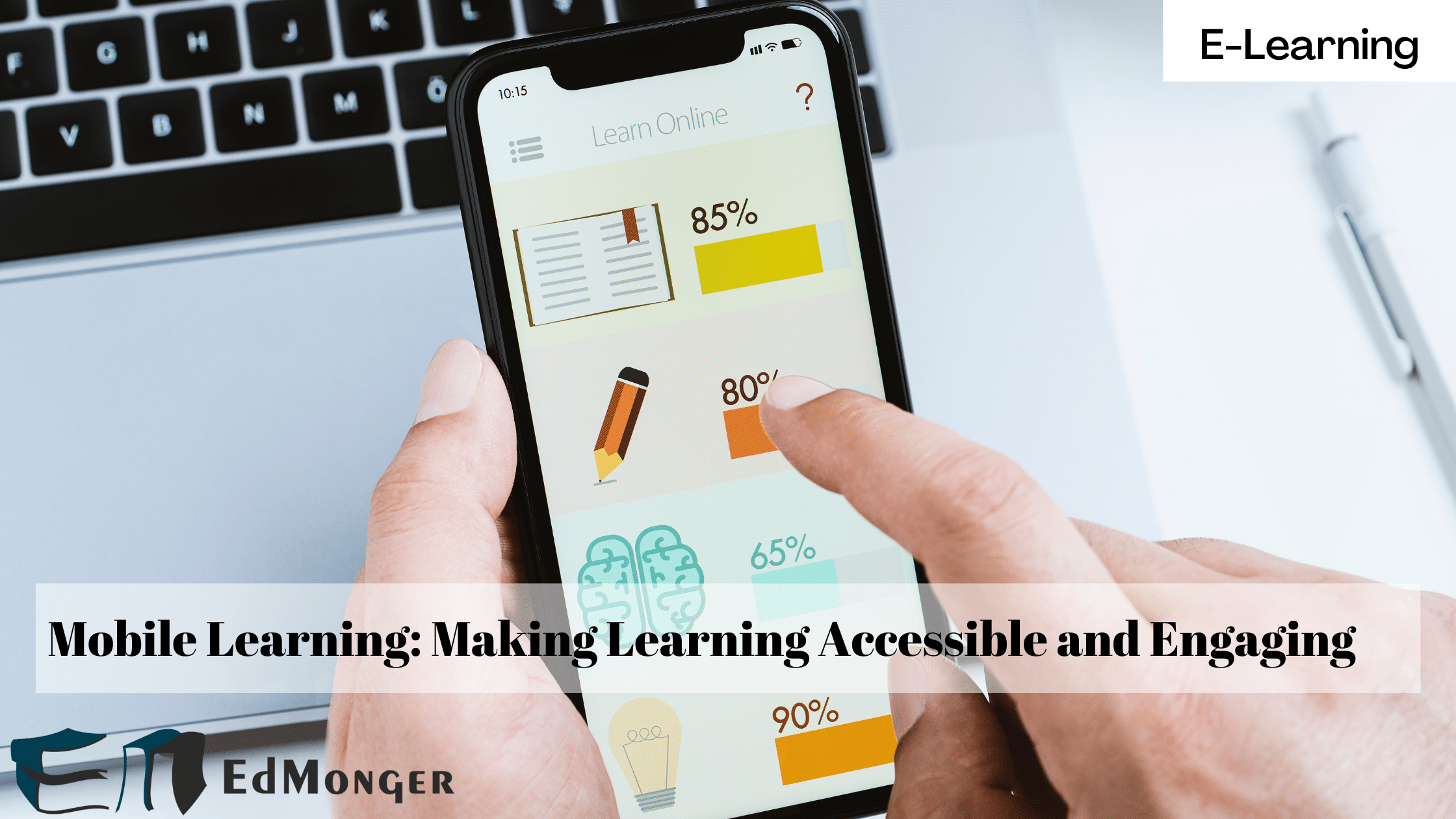Using mobile phones in teaching and learning is increasing day by day. When the epidemic struck, and schools and institutions were forced to close, individuals who lived in remote locations, where there was typically only one mobile phone in the family, or those who did not own a laptop, could learn well through mobile learning.
Learning through mobile phones is a sophisticated approach to the problem of providing efficient training. In addition, it gives a chance to broaden access to educational opportunities for all students.
The collaboration between students and teachers may become more personalized and engaging with mobile devices. Students are encouraged to participate actively in the session using mobile devices.
However, to implement mobile learning at your school, you must first ensure that the technology available to your kids is prepared for such a shift.
Either you must ensure that everyone has access to technology, or you may employ online educational technology tools to make the learning process more streamlined.
Now, the most crucial issue that has to be answered is whether or not mobile learning is successful. if yes, will it boost productivity or help students become more motivated to develop their abilities?
Does Mobile Devices Improve Accessibility, Productivity, And Motivation?
Yes, let’s have a look at the figures:
- Sixty-four per cent of respondents agreed that the accessibility of mobile devices led to improved online learning.
- Compared to desktop users, mobile users reported higher productivity levels by a ratio of 43 to 1.
- 70% of learners reported having a greater motivation to study when they could learn on their mobile devices.
This data is enough to let the world know the importance of mobile learning.
How To Use Mobile Phones In Effective Learning And Teaching
If you run an education business or develop online courses, using mobile devices like smartphones in the classroom can help provide students with more efficient learning opportunities. There are a few different ways in which you may integrate mobile technology into your online courses:
Using Gamification
Gamification is the need of an hour. The use of gamification in educational technologies is relatively widespread. Gamification has been employed worldwide since the revolution of online education.
Not only does this education technology in schools using mobile learning make teaching and learning more interesting, but it also provides every student with the opportunity to demonstrate their abilities.
According to the fact, the global market for educational gamification is projected to reach $2,317 billion by the year 2026.
Gamification using mobile technology helps the students to engage in polls, collect reward points, and compete with one another to get more rewards in the same way they receive after winning the game.
When you have students perform time-sensitive activities, using this component in your classes is beneficial.
Mobile Learning Allows Students to Finish Their Schoolwork Using Smartphones
In the past, if an individual learning course was established, it was made solely with the format of desktop computers in mind. These days, however, online learning courses being designed are compatible with mobile devices and desktop computers.
Because there is a cell phone in nearly every hand these days, kids can complete their schoolwork whenever and wherever they want, unaffected by any outside influence.
By leveraging mobile devices, educational institutions can make it easier for their students to complete their coursework on their mobile devices successfully.
Researchers said that 72% of participants reported a higher level of involvement when they are told to BYOD (bring your own devices). And if you know, there is a general phenomenon that if any person is more engaged in a work he will find it more accessible. The same goes for learning.
Mobile technology in education Makes Communication Smooth By Leveraging Push Notifications On Smartphones
Maintaining consistent connections with your students and providing them with timely updates is a fantastic method to keep them engaged in the content of your course.
If you have an app for online learning, then embedding smartphone alerts in that app makes it easier for you to communicate with your students and send them timely updates regarding courses, tests, and results besides notifying them about the class schedule.
The Ultimate Benefits Of Mobile Learning In Modern Classrooms
Student Can Learn Anytime, Anywhere
Nowadays, every student possesses a cell phone, which they can use whenever they like. If we are talking about educational technology, it doesn’t matter where the students are located because you can teach them about a specific topic at almost any location you want.
For this reason, students need to have uninterrupted access to the resources that will further their education, like internet connection (Which is now almost everywhere). They have access to education, figuratively speaking, right at their fingers.
Mobile phones Enable Learning Under One’s Own Pace.
Learning on mobile devices enables the use of many interaction mediums, each of which may be adapted to the learner’s preferences. Using their mobile devices in this way allows students to feel more invested in their education.
Students benefit more from the learning experience when they can learn in whatever way suits them best.
M-Learning: Easy-to-Carry Reference Guide for Education
In today’s environment, everyone has easy access to smartphones, which is why they are so widely used.
No one should undoubtedly have a desktop or laptop in their house today, but there will definitely be a smartphone. And if learners have a smartphone, they will not have any problem studying in any condition; it is an easy-to-carry reference guide for education.
The smartphone offers a portable platform that functions as a practical learning tool.
Mobile Learning Is a Support System For Practical Tools
A mobile phone can quickly analyze and show content specific to the user and personalized to that person’s preferences. As a result, apps incorporating geo-location, social networking, search functions, and newsreaders can be easily modified to serve as helpful teaching resources on mobile devices.




